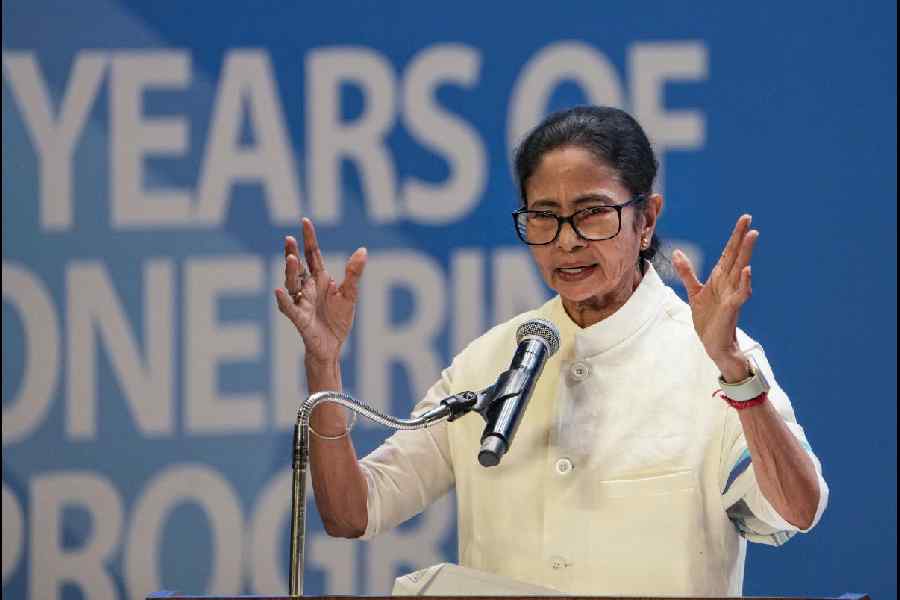Princess of prose’. ‘Darling of bleeding-heart Left-liberals’. ‘Maoist’. ‘Ambedkarite’. ‘Anti-capitalist’. ‘Anti-development’. ‘Anti-nuclear’. ‘Anti-government’. ‘Anti-state’. ‘Anti-saffron’. ‘Anti-national’.
Any three or four of these epithets together can identify Arundhati Roy, the writer of the (huge and) seditious heart. Such is the fame (rather, notoriety) that Roy bears on her feisty shoulders: a reputation built word by word through a quarter century of impassioned writing about the desecration of India’s democracy on every front — perhaps a perspective shared only by a shrivelling minority in the country today. All the more reason, then, for a collector’s edition of her ‘collected non-fiction’ spanning more than two decades — book ended by her two novels of 1997 and 2017 — and titled, like a sentimental and transgressive romance, My Seditious Heart.
This title (taken from the final essay) is no small irony: few would have sensed in July 1998, when the first one, “The End of Imagination”, was published in Outlook and Frontline, how prescient her romantic and defiant outcries against an emergent non-democratic India — and her alarmist predictions of its multiple woundings — would seem in just 20 years. There is something of a sombre irony, too, in the book being bound like a classic, replete with gold embossing: it is as if we know now that we must put it away with care on a high shelf and let it gather its rightful dust — for the times, they are rapidly a-changing.
Roy’s 950-page tome is a sometimes lyrical, sometimes strident record of a country’s slide from a liberal secular centrist identity (albeit with a sliver of leftism/socialism) to a Hindu nation of capitalist inclination and extreme-right-wing faith. It is also a record, distasteful as it may be for many, of how this apparently astonishing reversal of national colour was aided and abetted by successive governments since India’s Independence that were hardly all saffron-hued. For these achievements alone, My Seditious Heart is a classic. And seeping, leaking, lurching through every page is her intrepid politics. For Roy (despite the company she is sometimes seen to keep at public meetings and protests) is actually no mere bleeding-heart Left-liberal, but a visionary writer-activist in whom is melded a fearless political imagination and an instinctive understanding of the underbelly of a monstrously threatened democracy, who wields a pen that races ahead — even of her — most of the time.
Ideologically, ‘sedition’ may be said to be Roy’s avowed credo in her response to policies of governance in India over the past two decades. Simply defined in the dictionary as ‘language or behaviour that is intended to persuade other people to oppose their government’, what this amounts to, in these perilous times, is the sustaining of a sharp, critical, combative, idealistic eye on manoeuvres and machinations of the economically, socially and politically powerful to betray the common people. Sedition, of course, can be outlawed as treason and punished with jail time for its criminal intent and action — and Roy, despite the romantic lilt of the eponymous ‘heart’, would hardly wish to lighten the seriousness of the writer’s task she appropriated for herself since the demolition of the Babri Masjid in 1992. She has been jailed (for a day) and fined for her seditious heart — and voice, and pen — and remains constantly under surveillance and threat.
Roy’s Foreword spells out the structure of the collection, and its raison d’être. Chronologically arranged and unrevised, occasionally repetitive, “the essays... [are] as pieces of laundry — poor people’s washing — strung out across the landscape... interrupting the good news bulletins and spoiling the view”: as inevitable and necessary, and as disruptive and difficult to accept, for anyone who wishes to float on a sense of well-being about the ‘development’ of India into a ‘global’ presence through so-called domestic growth and international alliances. The longest section in the collection is also her most controversial piece of writing: “The Doctor and the Saint”, in which she frames the Ambedkar-Gandhi debates on the question of caste.
Then, the best-known of Roy’s long-form essays — from “The End of Imagination” on the nuclear tests of 1998 conducted by a BJP coalition government, on to “The Greater Common Good” on the struggle against the building of the Narmada dam, “The Algebra of Infinite Justice” and “An Ordinary Person’s Guide to Empire” on American imperialism after 9/11, “Listening to Grasshoppers” on the Gujarat genocide, “Walking with the Comrades” against the extermination of Maoist movements in villages, and “Capitalism: A Ghost Story” on Big Corporations, NGOs, American funding agencies and the “Privatization of Everything” — are buttressed by more than 30 essays of varied length addressing inequities, aggrandisement, exploitation, power-grabbing, hypocrisy, corruption, terror and megalomania that constitute the ‘dirty laundry’ of the contemporary Indian State. She appendices her early two-part essay, “The Great Indian Rape-Trick”, a strong critique of Shekhar Kapur’s film, Bandit Queen, which argues that Phoolan Devi’s agential possibilities had been obliterated in his visual narrative: “The film incensed me because it took the story of a most extraordinary woman and portrayed her as someone who had no volition...”
Together, Roy’s wealth of ideas and argument continually challenge the moribund state of Indian democracy, which has been crumbling since 1992, and her flamboyant rhetoric is girded by intense research. But does Roy provide solutions? Mostly, not. She asks questions that chew our brains, and she can do that in language that exhilarates and chokes, at once. And when the hurly-burly’s done, she returns (us) to the sense of who she is and what she possesses — a magician of words, and an imagination that leaps and soars — with this anxiety: “As... a fiction writer, I have often wondered whether the attempt to always be precise, to try and get it all factually right, somehow reduces the epic scale of what is really going on. Does it eventually mask a larger truth? I worry that I am allowing myself to be railroaded into offering prosaic, factual precision when maybe what we need is a feral howl, or the transformative power and real precision of poetry.” At their best moments, her essays sound that feral howl, and touch, however fleetingly, the power and precision of poetry. And it is in this, finally, that My Seditious Heart strikes and shifts the ground we stand upon: Roy’s political is in the poetical.
My Seditious Heart: Collected Non-fiction by Arundhati Roy, Hamish Hamilton, Rs 999












